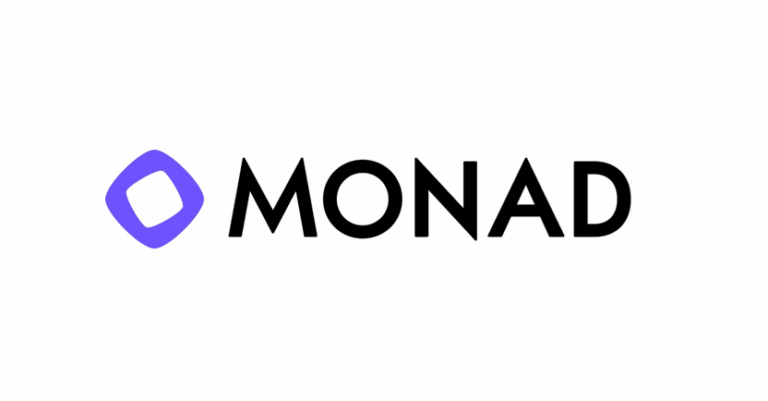Societe Generale (SocGen) is a major French multinational investment bank and financial services company that has been exploring the potential of blockchain technology for almost a decade. SocGen's FORGE (SG-FORGE) platform provides services for structuring and issuing financial instruments in a crypto format.
Laurent Marochini, Head of Innovation at Societe Generale Securities Services (SGSS) Luxembourg, has been a driving force in the merging of traditional banking with blockchain and digital assets. In particular, Societe Generale began experimenting with distributed ledger technology (DLT) as early as 2016, issued a €100 million digital bond on the Ethereum blockchain in 2019, and is developing the EUR CoinVertible stablecoin.
You’re a traditional French bank with 160 years of history. What projects / initiatives are you working on in the crypto & DLT space?
We realized our first experiments within Societe Generale Group about 10 years ago. In 2016, at Societe Generale Securities Services (SGSS) Luxembourg, we took part in the consortium FundChain with 10 players to develop solutions using Distributed Ledger Technology and smart contracts for the fund distribution value chain. During these experiments, we were able to realize the potential of the technology and its ability to help infrastructures evolve. It has helped us to create our convictions and validate the benefits like transparency, speed of transactions and cost. At SGSS, we then carried out the onboarding of the first regulated fund in France in 2022.
In parallel, Societe Generale FORGE (SG-FORGE), which was born in 2020, is now a fully integrated and regulated subsidiary of Societe Generale dedicated to cryptoassets, and it structures and provides services on digital bonds and structured products issued natively on blockchains. With recent transformative updates on its stablecoin, EUR CoinVertible, SG-FORGE intends to develop a robust offer for crypto-asset investors as an alternative to existing stablecoins, while continuing to develop innovative cross-border settlement and payment solutions based on blockchain technology for its corporate and financial institution clients.
Do you think it’s ironic for technology designed to disrupt banks now being adopted by established financial institutions?
The best way to predict your future is to create it. We are convinced that technologies like Blockchain may bring value for our customers and for certain processes, but not for everything. It is essential to be visionary and selective at the same time.
Which of your initiatives have gained the most traction so far?
Being based in Luxembourg, our participation as a central account keeper in the EIB's 2022 digital issuance has generated a lot of traction, especially as this is one the first digital issuance of its kind in Europe. It was also the opportunity to pioneer the testing of our local law and to list the product in the LuxSE. This highly innovative operation brought together several traditional players with the key aim of experimenting live and building the future of finance.
How do you assess the state of the European environment compared to the US?
Europe and the United States have both shown interest and openness. The European Union took a much more proactive regulatory approach with the pilot regime and MiCA by creating greater clarity and business opportunities. In the US, regulatory clarity has been a key issue. Nevertheless, with the approval of BTC ETFs and more recently ETH ETFs, we can count on the US to get back in the game quickly, especially as the big players and investments come from the same country. Overall, both Europe and the US actively engage with blockchain and crypto currencies, each region having its own regulatory and market dynamics.
Do you see any major flaws with the EU’s regulatory approach?
Any approach can be improved. Europe has taken the gamble of taking the lead on these issues by adopting a gradual approach. For example, we still have NFTs and DeFis that are out of scope, or UCITS funds that are not allowed to invest in crypto. The most important thing is to foster innovation and to encourage players to position themselves while developing a secure framework for all stakeholders.
Can MiCA support the usage of euros in crypto or will the US dollar stay the dominant exchange currency?
MiCA has been designed to create a framework for the issuance, trading and custody of crypto assets, including stablecoins. This means that any crypto asset pegged in euros and distributed in Europe will fall under the scope of MiCA. MiCA will therefore support Fiat uses of crypto. The use of USD in exchanges is another story. Its dominance as a sovereign currency is still very significant and is linked to the liquidity, market demand and economic factors. It is logically reflected in the crypto market. Any shift can be only gradual and influenced by the regulation, the market demand and especially the geopolitical and economic factors.
 Laurent Marochini is Head of Innovation at Societe Generale Securities Services (SGSS) in Luxembourg. Since 2018, Laurent has also been Blockchain and Crypto Leader. Prior to joining SGSS, Laurent held various management positions in the banking sector in particular BNP Paribas Securities Services and Credit Suisse Private Banking. He joined Societe Generale in 2006 as a Risk Manager. He is Co-Chairman of the Blockchain & Crypto Currencies working group for the Association of the Luxembourg Fund Industry (ALFI) and Chairman of the Fintech and Innovation Committee at the Association of Banks and Bankers in Luxembourg (ABBL).
Laurent Marochini is Head of Innovation at Societe Generale Securities Services (SGSS) in Luxembourg. Since 2018, Laurent has also been Blockchain and Crypto Leader. Prior to joining SGSS, Laurent held various management positions in the banking sector in particular BNP Paribas Securities Services and Credit Suisse Private Banking. He joined Societe Generale in 2006 as a Risk Manager. He is Co-Chairman of the Blockchain & Crypto Currencies working group for the Association of the Luxembourg Fund Industry (ALFI) and Chairman of the Fintech and Innovation Committee at the Association of Banks and Bankers in Luxembourg (ABBL).








